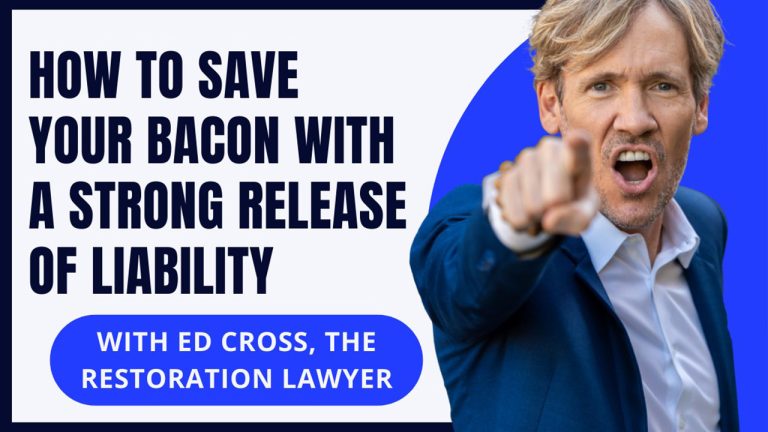Han v. State Farm Fire and Casualty Company
A class action claims State Farm Fire and Casualty Company has wrongfully used lower “new construction” estimates in paying claims for projects that amount to “reconstruction” of damaged property. State Farm obtained estimating data from Xactware reflecting that over the past six years, State Farm estimated over $90 million in repair damage replacement costs using “new construction” Xactimate settings for its insured in New Jersey. Xactimate costs for “reconstruction” are higher than pricing of the same item for “new construction”.
The definition of “new construction”, both as used by Xactimate and in the insurance and construction industries at large, is a building that needs to be rebuilt in its entirety, from the foundation up, resulting from an actual or constructive total loss to the insured’s property. The definition of “reconstruction” in the context of an insurance loss, as used by Xactimate and in the insurance and construction industries at large, is a building of which some parts remain serviceable, subject to the rebuilding of the remainder of the property.
The complaint alleges that, “as a result of this scheme, State Farm has routinely generated estimates that it knows full well to be below the fair and reasonable cost for the reconstruction of the insured’s property, ” and has occurred in at least New Jersey, New York and Pennsylvania, incurring “some type of financial hardship and/or financial loss.”
The complaint details the “State Farm Scheme”, with practices that may be quite familiar to restorers:
“In many cases, the insured was not represented either by counsel or a public insurance adjuster and has little to no understanding of construction, or the distinction between what is referred to as new construction as opposed to reconstruction. In many such cases, the insured settled the claim in reliance upon the construction figures provided by State Farm itself, the insured reasonably assuming that his insurance company is acting fairly and in good faith.
In some cases, generally when the insured was represented by an attorney or a public insurance adjuster, the insured’s representative recognized State Farm’s conduct as being in bad faith, and insisted on pricing on a reconstruction basis. In such cases, State Farm persisted in relying on its new construction figures, resulting in the adjustment being dragged out longer than necessary, and requiring the insured to either accept an offer below the true value of his claim, or to initiate litigation or other form of third party resolution dispute.
In some cases, rather than accept an unreasonably low offer, some such insureds demand appraisal pursuant to New Jersey statute and the provisions of their policy.
In at least some such cases, and upon information and belief in all such cases, State Farm’s appraisers are directed to voluntarily agree to enter into an appraisal award on the basis of reconstruction pricing, rather than allowing the issue to be decided by a neutral umpire.”
In one count of a partial loss claim, the Plaintiff’s public adjuster protested to State Farm the use of new construction numbers in the adjustment of a reconstruction loss. Nevertheless, State Farm refused to reconsider its decision or to revise its estimate, causing the adjustment of the claim to be unduly delayed. The Plaintiff was compelled to accept State Farm’s offer as to the undisputed claim amount, and to pursue the payment of the additional amounts owed through litigation. Through the aforesaid conduct, Plaintiff is seeking relief from damages alleging State Farm breached the contractual provisions that govern the payment of a covered loss. By insisting on adjusting the claim on the basis of new construction pricing even though the loss was reconstruction, Plaintiff alleges State Farm’s violated the standard of conduct established by the NJ legislature in N.J.S.A § 29:B-4(9)(f) , in that it did not attempt in good faith to effectuate a prompt, fair and equitable settlement of Plaintiff’s claim, even though it had acknowledged liability (tortious bad faith).
A lawsuit for insurance bad faith can potentially recover not just the monetary benefits under the policy (called “compensatory damages”) for the cleanup, contents manipulation, and repairs, but also damages for any wrongdoing. In many jurisdictions, these additional damages can include attorneys’ fees and punitive damages. Many states allow those claims to be assigned.
For restorers, an Assignment of Benefits (AOB) or Assignment of Insurance Rights (AOR) is a crucial ingredient in preventing unfair insurance practices. In nearly every state, an Assignment allows a restorer to take ownership of a portion of the rights under an insurance policy. As a result, the restorer “steps into the shoes” of the insured. This speeds up the process of documentation and claims evaluation, and allows the restorer to collect payment directly from the insurer.
In the case of the alleged State Farm conduct, an insurance bad faith claim is indicated, the Assignment allows the restorers to take direct legal action to protect its rights. By putting an insurance company on notice that the restorer has obtained rights under the insurance contract, an Assignment dramatically improves both the homeowner’s cleanup and repair experience as well as the restorer’s likelihood of being paid in full and on time. For more information about Assignments, check out The Book on the Assignment of Benefits.
For more detail on Han v. State Farm Fire and Casualty, read the complaint below.







One Comment
Comments are closed.